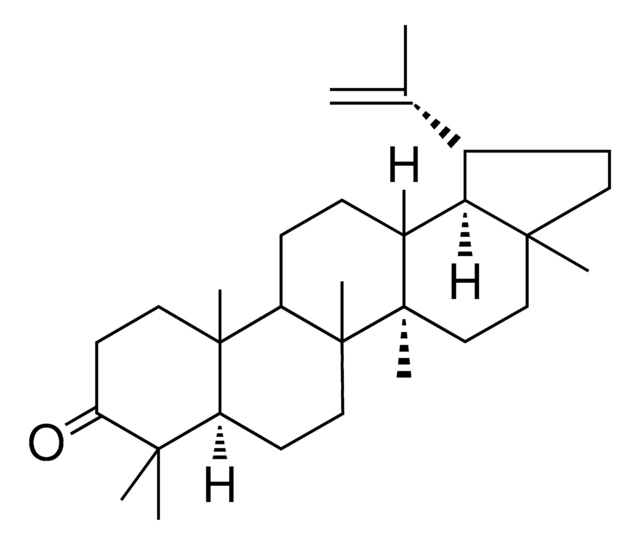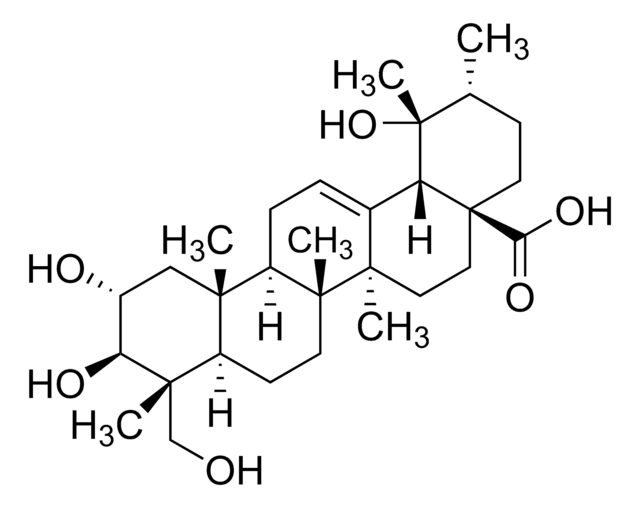Kluczowe dokumenty
08172
Cycloartenol
≥90% (GC)
Synonim(y):
(3S,5R,8S,9S,10R,13R,14S,17R)-17-((R)-1,5-Dimethyl-hex-4-enyl)-4,4,13,14-tetramethyl-tetradecahydro-cyclopropa[9,10]cyclopenta[a]phenanthren-3-ol, 9,19-Cyclo-24-lanosten-3β-ol, Handianol
Wybierz wielkość
1640,00 zł
Wybierz wielkość
About This Item
1640,00 zł
Polecane produkty
Poziom jakości
Próba
≥90% (GC)
Formularz
powder
ciąg SMILES
O[C@@H]1C([C@H]2[C@@]3([C@]4([C@H]([C@]5([C@@]([C@H](CC5)[C@@H](CCC=C(C)C)C)(CC4)C)C)CC2)C3)CC1)(C)C
InChI
1S/C30H50O/c1-20(2)9-8-10-21(3)22-13-15-28(7)24-12-11-23-26(4,5)25(31)14-16-29(23)19-30(24,29)18-17-27(22,28)6/h9,21-25,31H,8,10-19H2,1-7H3/t21-,22-,23+,24+,25+,27-,28+,29-,30+/m1/s1
Klucz InChI
ONQRKEUAIJMULO-YBXTVTTCSA-N
Szukasz podobnych produktów? Odwiedź Przewodnik dotyczący porównywania produktów
Zastosowanie
- Genome-Wide Investigation of Oxidosqualene Cyclase Genes Deciphers the Genetic Basis of Triterpene Biosynthesis in Tea Plants - Research on cycloartenol′s synthesis pathways through the genetic study of oxidosqualene cyclase in tea plants, providing insights into the enhancement of plant sterols beneficial for human health (Du et al., 2024).
Opakowanie
Kod klasy składowania
11 - Combustible Solids
Klasa zagrożenia wodnego (WGK)
WGK 3
Temperatura zapłonu (°F)
Not applicable
Temperatura zapłonu (°C)
Not applicable
Środki ochrony indywidualnej
Eyeshields, Gloves, type N95 (US)
Wybierz jedną z najnowszych wersji:
Masz już ten produkt?
Dokumenty związane z niedawno zakupionymi produktami zostały zamieszczone w Bibliotece dokumentów.
Klienci oglądali również te produkty
Active Filters
Nasz zespół naukowców ma doświadczenie we wszystkich obszarach badań, w tym w naukach przyrodniczych, materiałoznawstwie, syntezie chemicznej, chromatografii, analityce i wielu innych dziedzinach.
Skontaktuj się z zespołem ds. pomocy technicznej
















